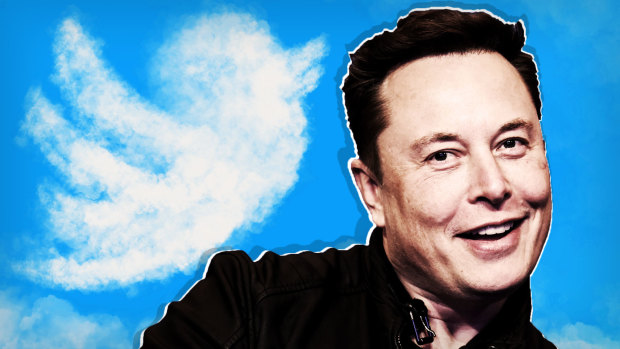
It's difficult to believe that, as of the time of writing, Twitter has been under Elon Musk's thumb for less than a year. The billionaire has rolled out update after update to the beloved microblogging platform, doggedly pushing on as, step by step, he began to plant the seeds that he hoped would blossom into his vision of an everything app.
Musk has said repeatedly that he shelled out that oft-ridiculed $44 billion necessary to acquire Twitter for two reasons. The first of these stems from his passionate desire to protect free speech within the digital town square of Twitter, something he is so blindly devoted to that hate speech on Twitter has flourished.
The second reason is to make his dream of an everything app, modeled after WeChat, an American reality.
More on Elon Musk's Twitter:
- Elon Musk Weekly Roundup: Tesla Wins (Sort of)
- Here's What Happened the Last Time Elon Musk Tried to Make X a Thing
- Why Elon Musk's Latest Big Move Might Be His Worst Yet
Welcome to the chaotic chronicles of X, the platform formerly known as Twitter.
Twitter Has Become ... X
We'll start with the death of the Bird App.
Back in early April, Twitter Inc. quietly became X Corp., though this change was made solely behind the scenes.
The change later became very much center stage on July 24, when Musk, in his most radical change yet to the platform, officially killed the name and logo of one of the most iconic social media platforms ever. The blue bird was replaced, in name and likeness, by X, something Musk has been trying to accomplish for around 25 years.
Here's the long and tumultuous journey that resulted in Twitter's sacrifice in the name of X.
X will become the most valuable brand on Earth. Make my words.
— Elon Musk (@elonmusk) July 25, 2023
Musk's Investment in Twitter
Elon Musk's net worth was around $236 billion as of July 2023, making him the world's richest man by a significant margin. So his Twitter takeover bid, while enormous, was really just a drop in his bucket.
On April 14, 2022, Musk made his first bid to take Twitter over for $44 billion, or about $54 per share. The offer valued the company roughly 38% above its stock price at the time. About 10 days later, Twitter accepted the offer.
The following months turned into a lengthy legal drama, with Musk attempting to put the deal on hold until July, when he actually withdrew his offer.
But by October, the two parties had made nice, and Musk became the owner of the Bird App on Oct. 27. On his first day, he cleared house, firing Twitter's CEO, CFO, general counsel and head of Legal, Trust and Safety.
This was only the beginning.
Musk laid off half of Twitter's workforce, close to 4,000 people, in a single day on Nov. 4, 2022. Before Musk's takeover, Twitter had around 7,400 employees. As of January, the company had just 2,300.
the bird is freed
— Elon Musk (@elonmusk) October 28, 2022
Twitter is Hemorrhaging Money
Twitter has plummeted in value since Musk's astronomical $44 billion acquisition of the platform. Musk himself estimated in March 2023 that the platform was worth around $20 billion, less than half what he paid.
A month later, Fidelity said the platform was worth only $14.41 billion, about a third of what Musk paid.
In the midst of this tumbling valuation has been an ongoing loss in both advertisers and advertising revenue.
The company reported $5.1 billion in revenue in 2021. That number fell to $4.4 billion in 2022, and is expected to cap out at $3 billion in 2023. Musk said July 15 that Twitter is "still negative cash flow, due to ~50% drop in advertising revenue plus heavy debt load."
Advertisers first started to flee the platform in November, not long after Musk took over. Now that the initial chaos of the takeover has settled, many are still striving to avoid the platform, now citing concerns over the hate speech that has been allowed to flourish under Musk's lax content moderation policies.
The Twitter Blue Journey
The first big change Musk made to Twitter involved Twitter Blue. In the before-Musk-times, Twitter Blue was a small service used to verify a user -- generally high-profile figures including celebrities and government officials -- was genuine.
Twitter’s current lords & peasants system for who has or doesn’t have a blue checkmark is bullshit.
— Elon Musk (@elonmusk) November 1, 2022
Power to the people! Blue for $8/month.
Musk announced Nov. 1 that Twitter Blue was changing and expanding; verification turned into a subscription model pegged at around $8 per month in the U.S.
Chaos, Musk's familiar temptress, reined over the platform in the months that followed as Twitter gradually wound down its verification program, eventually removing legacy checkmarks entirely.
In its place bloomed a complicated multi-colored verification system: gold check for companies, gray check for government and blue for individuals.
At the time, Musk said Blue subscribers would get priority in replies and search, the ability to post long video and audio and would also be shown half as many ads.
But a whole bunch of other Blue-only features have rolled out since.
Features for Subscribers
Since those early days, Twitter has rolled out tons of updates to its platforms, sending most to its paying subscribers. The first of these rolled out in December when Twitter said its Blue subscribers were allowed to upload videos up to an hour long. That has since expanded to two hours.
Musk also set about transforming the "micro" component of this micro-blogging site. Where users were originally capped at 140 characters, Twitter allowed Blue subscribers to send Tweets up to 4,000 characters long on Feb. 8.
That was expanded to 25,000 characters on June 19.
And as of July, Twitter was working on transforming its "Notes" experiment into something called "Articles," which will allow users to post very long, complex articles with mixed media. "You could publish a book if you want," Musk said at the time.
And come August, TweetDeck will become accessible only to subscribers.
Musk in July also announced rate limits with the goal of preventing data scraping across the platform. After much backlash, the limits were lifted to 10,000 tweets a day for subscribers (and only 1,000 a day for non-subscribers).
Subscribers also have the ability to edit (or even undo) tweets and have prioritized ranking in conversations and search.
Musk rolled out an ad-revenue sharing program for Twitter creators in July that saw some users receiving close to $40,000. But, of course, you have to be subscribed to have a shot at seeing a share of the ad revenue.
The first block payment -- totaling around $5 million -- came right around the time of Meta's Threads' launch. And Musk said that, instead of pocketing the revenue split received by his account, which is the most-followed account on the platform, he added it to the pool.
General Updates/Changes
While many features were made unique to Blue subscribers, Musk also made a bunch of updates to the platform itself. Twitter in December started a "cashtag" feature, which allows users to see how a ticker is performing without leaving the platform. Around the same time, Musk rolled out something called "view count," which allows users and creators alike to see just how many people saw a tweet, regardless of the number of likes it received.
Twitter also expanded its Community Notes section, which crowdsourced users to fact-check tweets.
Twitter in January made its algorithmic "For You" tab the default tab. As of April 15, only verified accounts "will be eligible in For You recommendations."
Twitter also ended the days of free API, rolling out a tiered system in its stead. Basic access offers low usage for $100 per month; its middle tier, API Pro, costs $5,000 per month and its Enterprise tier costs $42,000 per month.
Musk also rolled out encrypted DMs.
Tucker Carlson & Other Shows
As part of Musk's apparent desire to compete with video-streaming apps like YouTube, he turned Twitter into a place where competitors could stream away.
Ex-Fox News host Tucker Carlson was one of the biggest names he was able to draw. Carlson announced the shift to Twitter not long after he was let go by Fox, and has proceeded to post weekly monologues in a show that has been christened "Tucker on Twitter."
And while some have lauded the viewership numbers Carlson's tweets have racked up, the reality is that Twitter's view count does not really compare to cable news ratings, which count the number of people watching an average minute of content.
Carlson, however, is not the only one to join up at Twitter.
The Daily Wire, a conservative media company, started streaming several of its most popular shows directly on Twitter at the end of May.
Apple TV even jumped into the fray to take advantage of that two-hour video limit, posting the entirety of the first episode of its show "Silo" in an effort to promote the finale.
The Lawsuits
Oh, so many lawsuits.
While Musk's Twitter sent a couple of their own lawsuits out, the company has been on the receiving end of a number of legal challenges.
For humble starters, Twitter has been faced with at least nine lawsuits just alleging missed payments. The nine suits combined allege that Twitter owes a total of $14 million, according to the Wall Street Journal.
In some continuation of these missed payments, a lawsuit was filed against the company by an ex-employee in July, alleging that Twitter failed to pay a minimum of $500 million in severance after laying off more than half its staff.
Twitter was slapped with a $250 million suit from the National Music Publishers' Association (NMPA) in June, alleging that Twitter has engaged in aggressive copyright infringement.
Twitter was also faced with a German legal challenge that could decide whether the company is contractually obligated to remove hate speech from its platform, specifically antisemitic hate speech.
And since Musk turned Twitter into X, he might have stepped into another series of legal challenges. Microsoft and Meta, among around 900 others, hold a trademark of the letter 'X.' As of the time of writing, no suits have been brought against Twitter for trademark infringement, but one analyst said that "there's a 100% chance that Twitter is going to get sued over this by somebody."
Twitter sent a cease-and-desist letter to Meta not long after the launch of the company's Twitter-challenger Threads. The letter alleged that Meta maliciously copied Twitter's platform after illegally hiring former Twitter employees to squeeze them for trade secrets, something Meta spokespeople have said is unequivocally false.
Twitter also filed a lawsuit against four IP addresses in Texas for allegedly engaging in an enormous data scraping effort against the company that Musk said, forced Twitter to establish those heavily criticized rate limits.
Twitter Competition
The tension between Musk and his nemesis Mark Zuckerberg got a little more extreme when Zuckerberg launched his rival to Twitter: the Threads app. Threads got off to quite a strong start, becoming the fastest-growing app in history; it clocked 100 million users in fewer than a week.
The Instagram companion launched at the beginning of Twitter's rate limits and has striven to provide a kind environment for its users, in place of Twitter's commonly-known vitriol.
Musk, beyond sending that cease-and-desist letter, hasn't been very pleased with Threads, regularly criticizing the app, the company and Zuckerberg.
But following its strong start, Threads engagement and retention began to drop off. Only time will tell if Zuckerberg's rival option will turn into a real alternative to the Bird App ... well, X.
Action Alerts PLUS offers expert portfolio guidance to help you make informed investing decisions. Sign up now.







